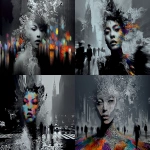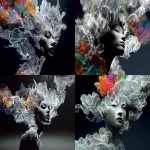Explore the Best AI Image Gallery
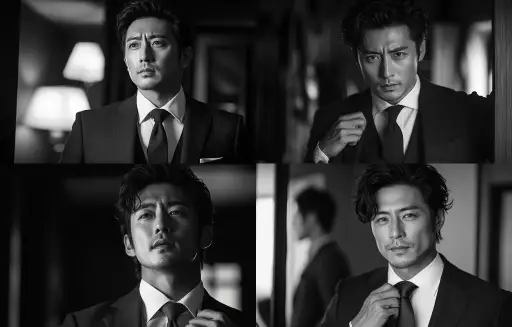
Beyond the Brush: Exploring the Ethical Frontier of AI-Generated Media
The realm of art and creativity is undergoing a profound transformation, driven by the emergence of artificial intelligence (AI) and its ability to generate media content. From stunningly realistic images and videos to original music compositions, AI-powered tools are pushing the boundaries of whats possible, blurring the lines between human and machine creation. While this technological leap presents exciting opportunities for innovation and expression, it also raises complex ethical questions that demand careful consideration.
The Creative Industry: A New Landscape
AI-generated media is already making its mark on various sectors of the creative industry.
- Design: AI algorithms can assist designers in generating concepts, creating variations of existing designs, and streamlining the prototyping process.
- Marketing and Advertising: Personalized content creation, targeted ad campaigns, and dynamic storytelling are being enhanced by AI-powered tools that analyze consumer data and generate tailored creative assets.
- Entertainment: From scriptwriting and character development to music composition and special effects, AI is playing an increasingly prominent role in film, television, and video game production.
Potential Uses: Unleashing Creative Possibilities
The applications of AI-generated media extend far beyond these examples.
- Education: AI can create interactive learning experiences, personalized educational content, and immersive simulations that enhance student engagement.
- Accessibility: Tools powered by AI can generate captions for videos, translate text into different languages, and create accessible versions of creative works for individuals with disabilities.
- Research and Development: AI can assist researchers in analyzing complex data sets, generating hypotheses, and visualizing patterns that may not be readily apparent to humans.
Ethical Considerations: Navigating Uncharted Territory
While the potential benefits of AI-generated media are undeniable, its crucial to address the ethical challenges that accompany this transformative technology.
- Authorship and Ownership: When AI creates content, who owns the copyright? How do we determine the legal status of works generated by machines?
- Bias and Fairness: AI algorithms are trained on vast datasets that can reflect societal biases. This can result in AI-generated media perpetuating harmful stereotypes or discriminating against certain groups.
- Misinformation and Deepfakes: The ability to generate highly realistic fake content raises serious concerns about the spread of misinformation, manipulation, and damage to individuals reputations.
- Job Displacement: As AI-powered tools become more sophisticated, there are concerns that they may automate creative tasks currently performed by human artists, designers, and writers.
Future Trends: Shaping Responsible Innovation
The field of AI-generated media is rapidly evolving. Looking ahead, several trends are likely to shape its future development:
- Increased Transparency and Explainability: There will be a growing focus on making AI algorithms more transparent and understandable, allowing humans to better comprehend how they generate content and identify potential biases.
- Regulation and Governance: Governments and industry stakeholders will need to develop ethical guidelines and regulatory frameworks to address the challenges posed by AI-generated media, ensuring its responsible use.
- Human-AI Collaboration: The future of creativity likely lies in a collaborative approach, where humans and AI work together to leverage the strengths of both.
Conclusion
AI-generated media presents a transformative opportunity for the creative industry, offering exciting possibilities for innovation and expression. However, it is essential to navigate this uncharted territory with careful consideration, addressing ethical concerns and ensuring that AI technology serves as a tool for empowering human creativity rather than replacing it.







](https://images.ai-img.art/thumbnails/150/ff09e32d2be011c0dd785984c5c1e47839ce551a31da1bde242860b30df2aa30.webp)








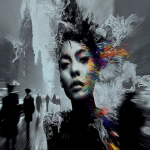
](https://images.ai-img.art/thumbnails/150/bd056a4718c27444e064198762f8dc8ffa1f74f1afd7dcda8d5cb8b142797d6e.webp)
](https://images.ai-img.art/thumbnails/150/685ae68cfab93a7e59a71206867b060c45bd6fd3cd561c4fe60fca514b09c5f8.webp)




](https://images.ai-img.art/thumbnails/150/7cf5a08238f29c821f52bb4f63db48af0b7f633ff3b9f7253074d78ced9ff6f6.webp)


](https://images.ai-img.art/thumbnails/150/0ba0be922ab76af53f75ab90126ae2b18a600ee3b96941e8ab897a9f10594e5a.webp)
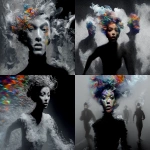







](https://images.ai-img.art/thumbnails/150/847809c77ca9a73b68bc190e6efb06fec87157685a243730d5a66a403b0e6e10.webp)


](https://images.ai-img.art/thumbnails/150/2ebdeb4f7db35100e5be5de9bc3e533a40d14e5feedefd7ffc586524a0f3ba8c.webp)
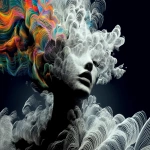

](https://images.ai-img.art/thumbnails/150/a3ed6513a6661aa3ee46e0c2924d1e8888854e91d8908de39db5590dc41f8d8f.webp)






